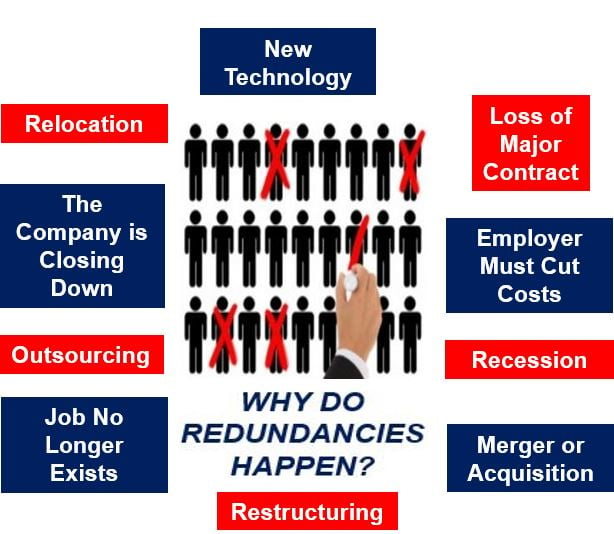Discovering the Operational Characteristics of Company Redundancy and Its Long-Term Sustainability

Redundancy Strategies for Company Continuity
In order to make sure continuous procedures, businesses should apply efficient redundancy approaches for company connection. Redundancy in this context describes the replication of vital parts or features within a system to mitigate the influence of potential failures. By integrating redundancy approaches, companies can enhance their durability versus disturbances triggered by different variables such as all-natural disasters, devices failures, or cyber-attacks.
One typical redundancy approach is the implementation of backup systems and data storage options. This entails developing duplicates of vital data and systems that can be triggered in situation of a key system failing. Additionally, companies can develop repetitive communication channels and source of power to keep connection and procedures throughout unpredicted events.
Additionally, cross-training staff members to execute numerous roles within the firm can act as an important redundancy technique. If key employees are unavailable due to disease or other reasons, this makes sure that crucial tasks can still be brought out even. Overall, effective redundancy approaches are crucial for organizations to support operational connection and reduce the impact of potential disturbances.
Effect of Redundancy on Organizational Strength
Offered the important role redundancy approaches play in guaranteeing organization continuity, checking out the influence of redundancy on organizational strength comes to be necessary for understanding the all natural operational dynamics of a business. Redundancy, when purposefully implemented, can considerably add to improving an organization's strength in the face of unexpected challenges.
In addition, redundancy can promote technology and imagination within an organization as employees really feel encouraged to take computed risks, understanding that there is a safety and security internet to support them in instance of failing. Generally, the effect of redundancy on organizational strength is profound, shaping the lasting sustainability and success of a business.
Balancing Performance and Flexibility in Redundancy
Achieving an unified stability between operational effectiveness and flexible flexibility is an essential challenge in the strategic deployment of redundancy within organizations. Also much flexibility without a solid Home Page functional foundation can result in ineffectiveness and incongruity.
To stabilize performance and flexibility in redundancy preparation, companies need to carefully evaluate their functional demands, market dynamics, and tactical goals. Inevitably, locating the best equilibrium between performance and flexibility is important for building a resistant and lasting company in the face of uncertainty.
Long-Term Sustainability Via Redundancy Planning
To make certain long-lasting feasibility and stability, companies must purposefully straighten their redundancy planning with lasting sustainability goals, therefore integrating functional efficiency with flexible flexibility. Long-lasting sustainability via redundancy preparation involves greater than simply short-term cost-cutting actions. It requires a detailed tactical strategy that anticipates future challenges and possibilities. Companies must view redundancy not as a reactive solution to prompt problems but as a positive strategy for long-lasting success. By integrating redundancy planning with sustainability purposes, companies can create a resilient structure that can withstand different market variations and inner changes.

Aggressive Steps for Sustainable Business Operations
How can companies proactively enhance their operational sustainability for long-term success? Carrying out aggressive measures is vital for business aiming to ensure sustainable procedures.
Furthermore, cultivating a society of continuous improvement and knowing within the organization can enhance flexibility to transforming market problems and consumer demands. Encouraging employee participation in decision-making procedures and providing possibilities for expert development can boost spirits, productivity, and overall efficiency. Establishing clear goals, keeping an eye on essential performance signs, and regularly assessing development are essential components of positive sustainability monitoring.
Working look at more info together with vendors, customers, and various other stakeholders to promote lasting techniques throughout the supply chain can produce a causal sequence of positive effect - redundancy pay if company goes bust. By taking positive steps in the direction of operational sustainability, firms can develop strength, drive technology, and protect their lasting success in an ever-evolving company landscape
Verdict

In the world of business administration, the tactical release of business redundancy stands as a pivotal yet detailed technique that necessitates a delicate balance in between operational efficiency and lasting feasibility. By dissecting the operational characteristics that underpin company redundancy and reviewing its wider implications for business resilience and adaptability, a nuanced understanding of exactly how redundancy strategies can form the future trajectory of a firm begins to unfold.Offered the important role redundancy methods play in guaranteeing organization continuity, exploring the effect of redundancy on organizational durability comes to be imperative for comprehending the all natural functional dynamics of a business. On the whole, the impact of redundancy on business resilience is profound, shaping the lasting sustainability and success of a firm.
In final thought, understanding the operational dynamics of business redundancy is crucial for making sure long-term sustainability.